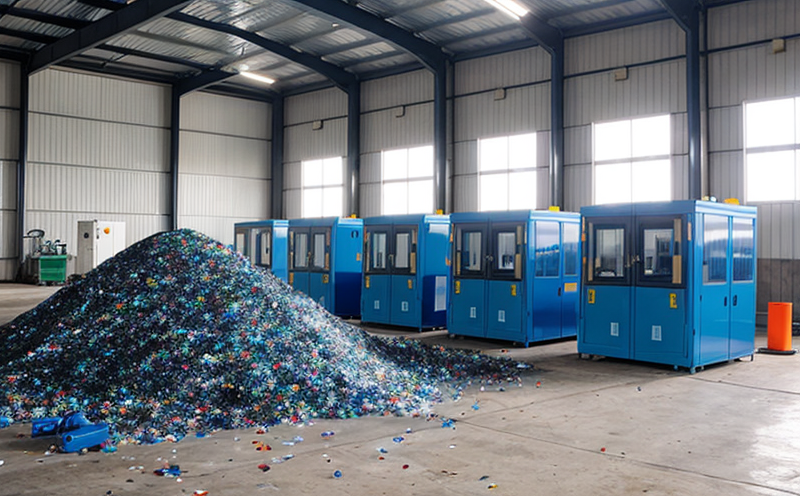ISO 23832 Circular Economy Indicators for Plastics
The ISO 23832 standard is a cornerstone in the circular economy, designed to support the recycling and recovery of plastics. This international standard provides methodologies for quantifying indicators that measure the environmental impact of plastic products throughout their lifecycle, from production to disposal.
Understanding these indicators is crucial for waste management professionals, R&D engineers, compliance officers, and procurement teams who are responsible for ensuring sustainable practices in the recycling sector. The circular economy aims to minimize waste generation by promoting reuse, recycling, and recovery of materials. ISO 23832 plays a pivotal role in standardizing how these processes are evaluated.
The methodology outlined in ISO 23832 helps stakeholders identify which parts of the product lifecycle have the greatest environmental impact. It is based on life cycle assessment (LCA) principles, focusing on resource efficiency and waste reduction. The indicators cover various aspects such as material recovery rates, energy consumption during recycling processes, greenhouse gas emissions, and the use of recycled content.
For example, R&D engineers can use this standard to innovate new recycling technologies that reduce environmental impact. Procurement teams can ensure they are sourcing products aligned with circular economy principles by evaluating suppliers based on these metrics. Compliance officers benefit from having a standardized framework for measuring compliance with environmental regulations related to plastic waste.
The application of ISO 23832 is not limited to just the recycling industry but extends across sectors like manufacturing, retail, and consumer goods where plastics are widely used. By adhering to these circular economy indicators, companies can contribute positively towards achieving global sustainability goals set forth by organizations such as the United Nations.
It's important to note that ISO 23832 complements other international standards relevant to plastic recycling, including those from ASTM and EN series. Together they form a robust framework for managing plastics sustainably within closed-loop systems.
Scope and Methodology
The scope of ISO 23832 encompasses the entire lifecycle analysis of plastic products, emphasizing their role in circular economy practices. This includes but is not limited to evaluating:
- Material flow within recycling processes,
- Emissions during processing stages,
- Energy efficiency throughout the supply chain,
- End-of-life options for used plastics.
The methodology involves detailed quantitative assessments using life cycle assessment (LCA) techniques. LCA provides a comprehensive view of environmental impacts across all stages from raw material extraction through manufacturing, use phase, and final disposal or recycling. For each stage, key performance indicators are established to quantify specific parameters such as carbon footprint, water usage, and waste generation.
Once data has been collected according to ISO 23832 guidelines, it is analyzed using advanced statistical tools provided by the standard itself. This enables stakeholders to make informed decisions about improving sustainability across their operations involving plastic materials.
Benefits
Adhering to ISO 23832 offers numerous advantages for organizations involved in waste management and recycling, particularly those dealing with plastics. Some key benefits include:
- Enhanced Sustainability: By following this standard, companies demonstrate their commitment to reducing environmental footprints associated with plastic usage.
- Informed Decision Making: Standardized data helps decision-makers prioritize actions that yield the highest returns in terms of resource conservation and pollution prevention.
- Better Collaboration: With consistent metrics across different entities, there is greater opportunity for collaboration among stakeholders who share common goals regarding plastic waste management.
- Increased Marketability: Products certified according to ISO 23832 can command premium prices due to their reputation as environmentally responsible choices.
In summary, compliance with this standard not only enhances internal efficiency but also improves external perceptions of corporate responsibility and social conscience. It fosters a culture of continuous improvement towards more sustainable practices.
International Acceptance and Recognition
The ISO 23832 standard enjoys widespread international recognition and acceptance, particularly in regions committed to advancing circular economy initiatives. Several countries have integrated elements of this standard into their national policies:
- European Union: The EU has adopted several aspects of ISO 23832 as part of its Circular Economy Action Plan.
- United States: U.S. federal agencies and state governments often reference similar principles when formulating regulations related to plastic waste management.
- Japan: Japanese industries frequently adopt this standard voluntarily for internal auditing purposes or to meet customer requirements.
Besides governmental endorsement, many private sector organizations have embraced ISO 23832 due to its practical applicability. Companies like Coca-Cola, Nestlé, and Procter & Gamble use these circular economy indicators in their supply chain management strategies.
Recognition of this standard extends beyond geographical boundaries; it is respected globally among professionals working in the field of waste management and recycling. Industry associations worldwide cite ISO 23832 as a benchmark for best practices.





